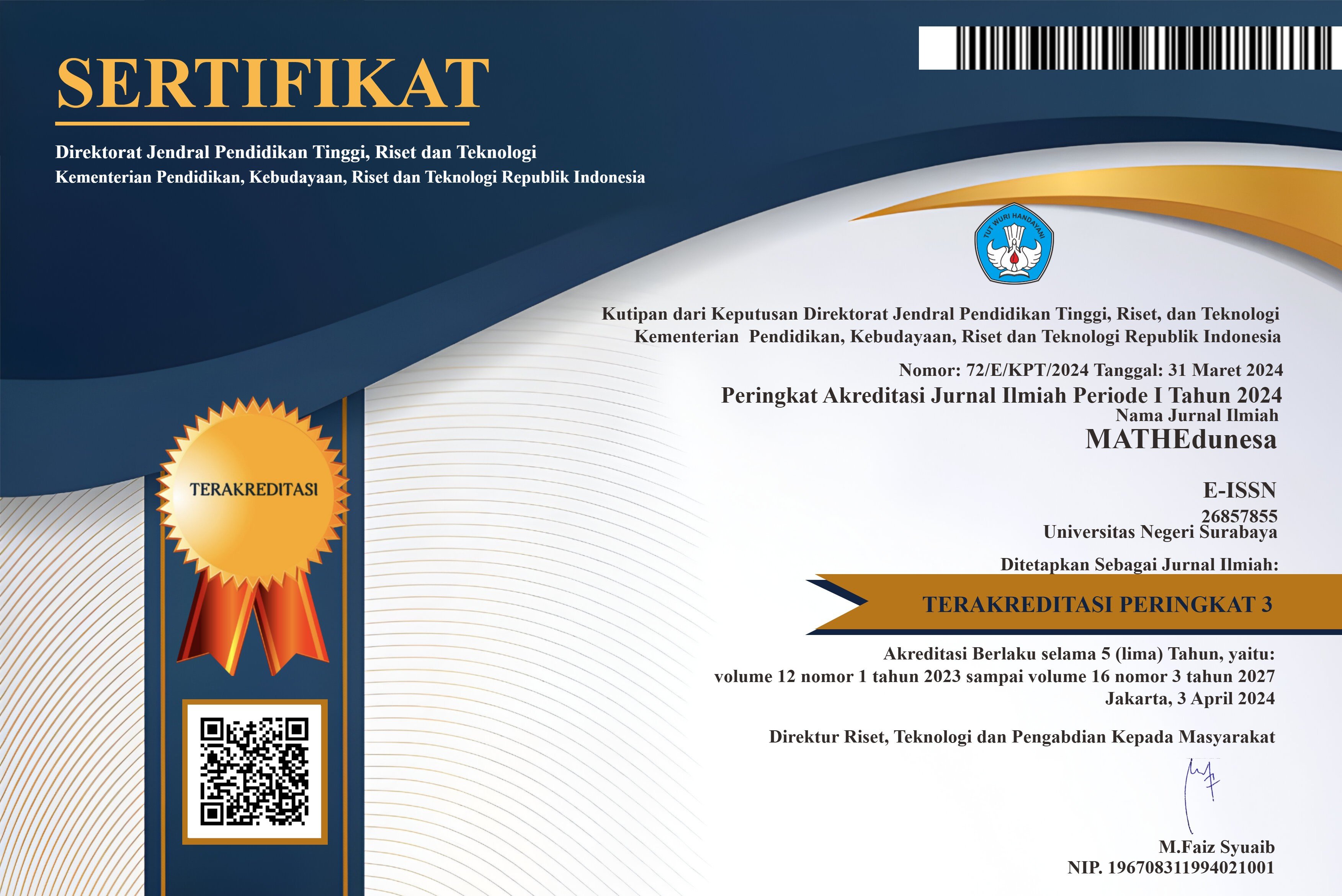Pemodelan Matematis Kolaboratif Siswa SMP pada Materi Fungsi Linier
DOI:
https://doi.org/10.26740/mathedunesa.v14n2.p515-539Abstract
Mathematical modelling plays an important role in developing students' problem-solving skills and addressing real-world contexts. Due to the complex nature of mathematical modelling, working collaboratively plays an important role. Working collaboratively is also able to provide better results than working individually. This study is descriptive qualitative research that aims to describe the collaborative mathematical modelling process of junior high school students on linear function material. The subjects of this study were 3 groups where the first group used a linear function model and did two modelling cycles, the second group used a linear function model and did one modelling cycle, and the third group used a division and mean value model. Students are able to identify problems until assumptions are made. Based on these assumptions, students can carry out further stages of modelling collaboratively until the validation stage. However, some groups still experienced errors in identifying the problem so that the assumptions did not match the context of the problem which caused one group to do two cycles of mathematical modelling. Students who are active in mathematical modelling are high and middle ability students, while low ability students are less active in following the mathematical modelling sequence.
Downloads
Downloads
Published
Issue
Section
 Abstract views: 154
,
Abstract views: 154
, PDF Downloads: 179
PDF Downloads: 179




